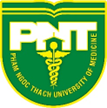Health literacy is a critical aspect of overall well-being and plays a significant role in individuals’ ability to make informed decisions about their health. It refers to the degree to which individuals have the capacity to obtain, process, and understand basic health information and services needed to make appropriate health decisions.
Assessing and measuring health literacy is essential for healthcare providers, policymakers, and researchers to understand the level of health literacy within a population or specific group. It helps identify areas of improvement, develop targeted interventions, and ensure that health information is accessible to all individuals, regardless of their literacy level.
The Importance of Health Literacy Assessment
Health literacy assessment provides valuable insights into the health knowledge, skills, and abilities of individuals. It helps identify barriers to understanding health information, such as language barriers, cultural differences, or limited educational background. By understanding these barriers, healthcare providers can tailor their communication and educational materials to meet the diverse needs of their patients.
Moreover, assessing health literacy allows healthcare organizations to evaluate the effectiveness of their communication strategies and interventions. It helps identify areas where improvements can be made to enhance patient understanding and engagement. By addressing health literacy gaps, healthcare providers can empower individuals to take an active role in managing their health and making informed decisions.
Methods of Health Literacy Assessment
Various methods and tools are available to assess health literacy levels. These methods can be categorized into subjective and objective measures.
Subjective Measures:
Subjective measures rely on self-reported assessments, where individuals rate their own understanding and comfort level with health information. These measures include questionnaires, surveys, and interviews. They provide valuable insights into individuals’ perceptions of their health literacy but may be influenced by factors such as social desirability bias.
Objective Measures:
Objective measures assess health literacy through performance-based tasks. These tasks evaluate individuals’ ability to read, comprehend, and apply health-related information. Objective measures include the Test of Functional Health Literacy in Adults (TOFHLA), Rapid Estimate of Adult Literacy in Medicine (REALM), and the Newest Vital Sign (NVS). These measures provide more standardized and reliable assessments of health literacy skills.
Using Health Literacy Assessment Results
Once health literacy levels are assessed, the results can be used to inform targeted interventions and strategies to improve health communication. Healthcare providers can adjust their communication style, use plain language, and provide visual aids to enhance understanding. They can also ensure that written materials are at an appropriate reading level and available in multiple languages.
Policymakers can use health literacy assessment results to develop policies and initiatives that promote health literacy at a population level. By addressing systemic barriers and improving health education, policymakers can create an environment that supports individuals’ ability to access and understand health information.
Researchers can utilize health literacy assessment data to study the impact of health literacy on health outcomes. They can explore the relationship between health literacy and healthcare utilization, medication adherence, and health disparities. This research can drive evidence-based interventions and policies to improve health literacy and overall health outcomes.
Conclusion
Health literacy assessment and measurement are crucial for understanding individuals’ capacity to obtain, process, and understand health information. By assessing health literacy levels, healthcare providers, policymakers, and researchers can develop targeted interventions, enhance communication strategies, and improve health outcomes. It is an ongoing process that requires collaboration and a commitment to ensuring that health information is accessible to all individuals, regardless of their literacy level.
